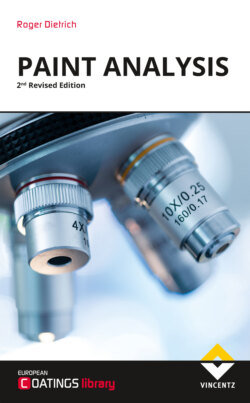Читать книгу Paint Analysis - Roger Dietrich - Страница 24
На сайте Литреса книга снята с продажи.
2.7Iterance
ОглавлениеWhen assessing the results of all analyses carried out, it is necessary to check whether there are contradictions in the statements of the analyses, or if the analytical question has been answered.
The comparison of the assessment of the results with the information provided serves to determine whether, for example, the type of coating specified by the client has been verified, or whether a different coating was used, whether the sequence of layers corresponds to the specifications, etc.
The comparison of the data evaluation with the failure hypotheses is the step that leads to the actual problem solution. In case of ambiguities it will guide to the definition of a new investigation plan and, if necessary, to the re-evaluation of the damage hypothesis.
After developing a good design of experiment, you would expect to perform the projected analysis and find a result that helps to solve the issue. But this is not always how it works. Quite often the first analyses tell that the informed guess was wrong or at least part of the truth. Scientific methods are sometimes frustrating for people which expect a quick, undoubtable and clear answer after doing one analysis. In fact, often the result of the first so called “screening” analysis answers one question and opens the door to several new questions. This is neither the fault of the one who did the analysis nor is it a proof that the analysis is senseless. It is very often the result of our (understandable) desire to have simple and easy answers to complex questions. We do not like complexity, and we do not always see it. Sometimes we find ourselves after the first analyses in a situation, that we do not understand, what we have measured, because we are stuck in the belief that there is one reason for one failure. But the equation:
A + B = C ….
meaning there is a sample A that has suffered an influence B and the result is C is sometimes too simple. We must admit that we neglected influence D and E to get the result C.
This challenge requires again the intelligence which means the witness of experienced people. After evaluating their knowledge, the iteration of the analytical process might be necessary. This means with the first results (that did not lead to the quick answer) and the extra “intelligence” we make a new refined (better) informed guess and prove the assumptions by going back to the analytical process and perform additional analyses.
